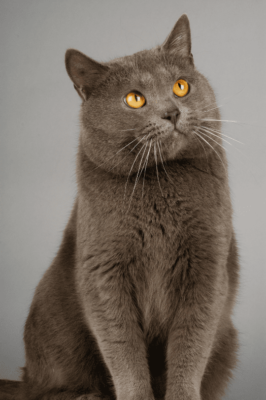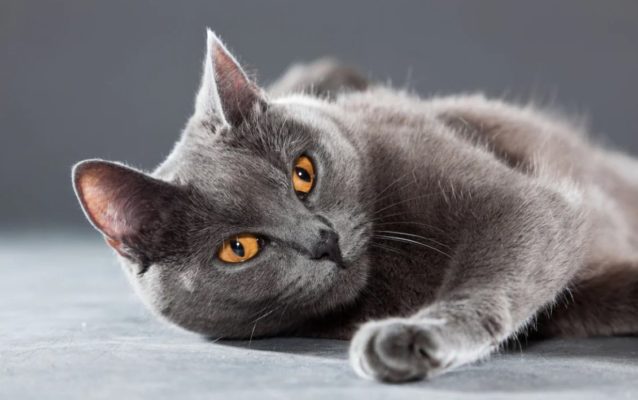Chartreux

The Chartreux cat is friendly, loyal, and loving. It’s impossible to resist Chartreux, who greets you with a purr and a mysterious smile. Chartreux’s perfect day is all about food, short games, and naps. This cat loves to be close to her family and is gentle and attentive. Chartreux will snuggle up to you if you are not feeling well. The cat is cold and a little shy toward strangers.
Table of Contents
Breed Information
| Origin | France |
| Size | Up to 30 cm |
| Weight | Males 4-7 kg Females 3-5 kg |
| Fur Type | Short-haired |
| Color | Various shades of blue |
| Lifestyle | Outdoors, indoors |
| Lifespan | 12-15 years |
| FIFe Classification | Category III: “Short-haired and Somali” Breed designation – CHA |
| WCF Classification | Group 3: “Short-haired” Breed designation – CHA |
| TICA Classification | CX |
| Group | Short-haired cats, apartment cats (docile cats) |
| Price | $1000-1500 |
Breed Photos
Origin History
The Chartreux is a breed that has been around for centuries. It is difficult to say with certainty where and when the breed first appeared. Like most breeds with a long history, there are legends about Chartreux. Researchers are still arguing with each other because there are at least two versions of Cartesian cat origin.
One of them says that the Carthusian monks of the monastery of Grand Chartreuse bred these blue cats in their spare time from prayer. They were also known to make the world-famous Chartreuse liquor and forge weapons. The monks supposedly selectively bred cats with quiet voices so that they would not interfere with prayers. It may sound like a good old tale of the lives of the monks of the Carthusian order. Also, there is no mention in the monastic records of either Chartreux or other breeds.
The Chartreux breed was first mentioned by the famous French biologist Count de Buffon in 1749. In his works, he said that the ancestors of Chartreux came from Syria. The breed was valued for its hunting instincts – cats guarded homes and livestock from rodents. However, Chartreux cats were treated differently back then: they lived on the streets. After World War I, cat lovers formed the standard for the Chartreux cat breed.
Appearance
The Chartreux breed is a truly fluffy pet. Cats are medium-sized but still compact due to somewhat shortened paws. Different shades of blue coat are allowed; the skin is also slightly bluish. Wool is silky, soft, and pleasant to the touch. The physique of the cat is muscular, massive. Chartreux tail is very agile. It may seem that the Chartreux cat is clumsy and awkward, but it is very flexible and graceful.
The head is wide, rounded, and shaped like an inverted trapezoid. The ears of the Chartreux cat are medium-sized, triangular, set high. The puffy cheeks can give the impression that the cat is constantly smiling. The first Chartreux cats had green eyes, but the breed was bred with copper-yellow eyes by the XX century. Kittens are born with blue eyes, which eventually turn yellow. The nose is dark graphite in color, and the finger pads are grayish pink.
Character
The Chartreux cat is friendly, loyal, and loving. It’s impossible to resist Chartreux, who greets you with a purr and a mysterious smile. Chartreux’s perfect day is all about food, short games, and naps. This cat loves to be close to her family and is gentle and attentive. Chartreux will snuggle up to you if you are not feeling well. The cat is cold and a little shy toward strangers. She will not greet a guest with the same warmth with which she greets her family members. Chartreux can make friends with other pets besides rodents and birds.
The character of Chartreux is calm: it will not make a mess in the apartment or scratch your furniture. You can calmly leave the animal at home and not worry about a spoiled couch or chair. Moreover, the Chartreux cat is very intelligent and follows its family’s daily routine. It won’t wake you up in the middle of the night demanding food or running around the house.
Care
The Chartreux cat has very beautiful fur, which needs careful care during the molt. You need to comb out the cat’s coat and then go over it with a wet hand to collect the dead hairs. Once every six months, the cat should be bathed. Choose a shampoo for short-haired cats and rinse and dry the hair thoroughly. Don’t forget regular brushing – Chartreux is prone to the formation of stones and plaque. Eyes and ears need attention, too – wipe them with a cotton swab.
Education
Chartreux cats are not difficult to train to the litter box and scratching post. At a very early age, the owner should explain that climbing on the table and stealing treats from it is strictly forbidden. You should not expect a Chartreux cat that it will stand on its hind legs and push the button on command. You can teach your cat to answer by name or even to bring some toys. The main thing is not to raise your voice to the animal because it can be offended.
Common Diseases
The Chartreux cat has good health. Musculoskeletal abnormalities are the most common. If your cat begins to limp, see your veterinarian. Vaccinations and helminth infestation prevention are an integral part of keeping your furry pet healthy.
Nutrition
Chartreux has an incredible appetite, but at the same time, they are sedentary, so they are prone to obesity. When choosing a food program for your furry pet, give preference to dry food. They have a balanced amount of minerals and vitamins. Of “homemade” food is suitable well-cooked meat: rabbit, chicken, beef. As a side dish, the Chartreux cat will like boiled zucchini, pumpkin, and cauliflower. Chartreux will gladly drink kefir, but it is better to refuse whole milk, as it can cause digestive upset.
 Thai
Thai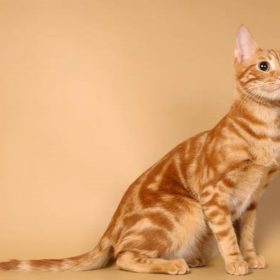 Anatolian Cat
Anatolian Cat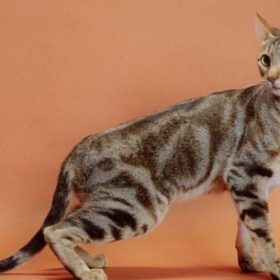 Sokoke
Sokoke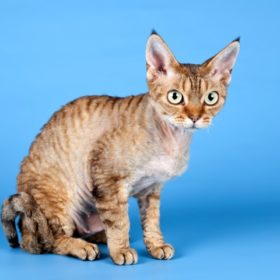 Devon Rex
Devon Rex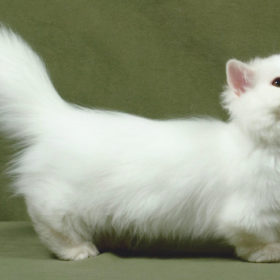 Minuet (Napoleon)
Minuet (Napoleon)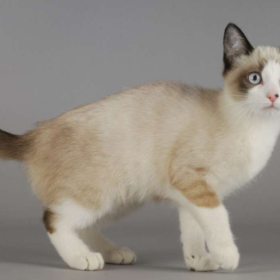 Snowshoe
Snowshoe
